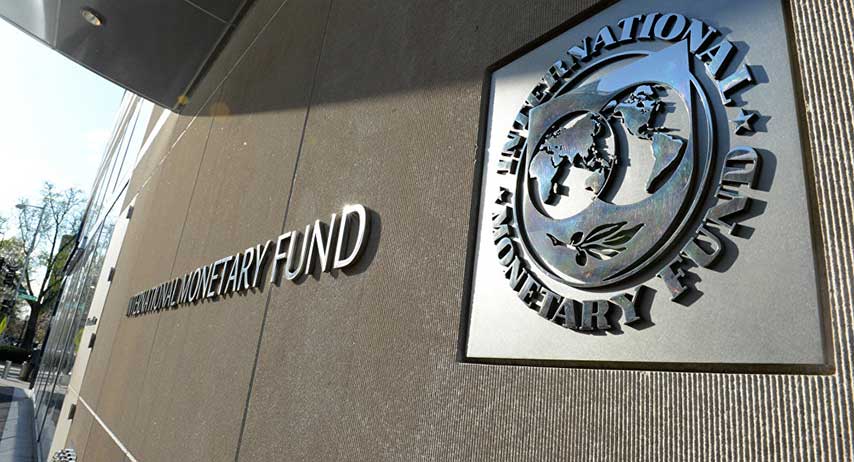IMF Executive Board Approves US$1.64 billion Stand By Arrangement for Jamaica.
- IMF Board approves new three year SBA agreement for US$ 1.64 billion, program follows successful EFF agreement
- The Jamaican authorities have indicated that they will treat the arrangement as precautionary
- New arrangement aims to sustain macroeconomic stability, while boosting employment, raising living standards
The Executive Board of the International Monetary Fund (IMF) today approved a three-year Stand-By Arrangement (SBA) for Jamaica to support the authorities’ continued economic reform agenda. Access under the SBA arrangement amounts to about US$ 1,64 billion (SDR 1,195.3 million), the equivalent of 312 percent of Jamaica’s quota in the IMF. The Jamaican authorities have indicated that they will treat the arrangement as precautionary, and do not intend to draw on the new SBA unless exogenous shocks generate an actual balance of payments need. The Executive Board approval will make about US$ 411.9 million (SDR 300.1 million) available, and the remainder in six tranches upon completion of semi-annual program reviews.
Following the Executive Board discussion on Jamaica, Mr. Tao Zhang, Deputy Managing Director and Acting Chair, said:
“Jamaica has established a commendable track record of program ownership and implementation under the Extended Fund Facility (EFF). Macroeconomic stability has been entrenched, evidenced by low inflation, the build up of foreign currency reserves, and a decline in the current account deficit. Fiscal discipline and proactive debt management have helped place public debt on a downward trajectory. Still, growth is low, poverty and unemployment are high, and crime and security challenges impose a serious drag on growth.
“The authorities’ request for a Stand-By Arrangement (SBA), which they intend to treat as precautionary, will provide insurance against unforeseen adverse external economic shocks, while focusing reform efforts to deliver better growth and job outcomes, as well as reduce poverty, while sustaining macroeconomic stability.
“Fiscal discipline and public debt reduction will continue to anchor Jamaica’s reform program. Public sector transformation, another key pillar of the program, will seek to re-orient public resource allocation toward infrastructure, social protection, and security-related spending, while delivering more efficient public services. The ongoing growth-friendly shift from direct to indirect taxes will continue to broaden the tax base and improve the efficiency of the tax system. The program will continue to protect social spending, while also instituting reforms to strengthen the social safety net.
“The Jamaican authorities recognize that enhancing monetary policy credibility and operations for an eventual move to inflation targeting is critical. Key reforms include strengthening the operational autonomy of the Bank of Jamaica, refining the monetary policy signaling and liquidity provision framework, and improving macroeconomic modeling and forecasting. Toward this end, the authorities are committed to maintaining exchange rate flexibility and continuing to build international reserves through market-based purchases of foreign exchange. Furthermore, concrete steps will be taken to further enhance financial sector resilience and promote greater access to credit and financial inclusion.
“Supply side reforms are critical to unlock Jamaica’s growth potential and create more private sector jobs. In this context, every effort is needed, in collaboration with development partners, to execute the structural growth reforms recommended by the authorities’ Economic Growth Council. Resources will have to be redirected to combat crime and ensure national security. Easing of growth bottlenecks will facilitate a stronger private sector job creation, as the government refocuses and streamlines its role.
“The authorities’ commitment and commendable track record, together with continued broad-based support for the reform agenda, should help foster its successful implementation.”
ANNEX
Background
Jamaica has made commendable progress in its economic adjustment program over the past three and a half years under the existing IMF-supported program (see Press Release No. 13/150). Fiscal discipline and proactive debt management have helped reduce public debt by more than 25 percent of GDP since the start of the extended arrangement under the Extended Fund Facility (EFF). Macroeconomic stability is becoming entrenched as evidenced by low inflation, the buildup of foreign currency reserves, and a decline in the current account deficit. And important reforms are being undertaken to unlock Jamaica’s growth potential.
Still, real GDP growth and employment dividends from the reforms have been slow to materialize. Growth has averaged 0.8 percent during the program period, albeit improving more recently to 1.4 percent in Q1 of FY16/17, supported by gains in agriculture, manufacturing, electricity generation, and tourism. Growth in FY2016/17 is expected to reach 1.7 percent in FY16/17. Business confidence is strong and Jamaica’s international bonds are trading close to the average rate of other emerging markets. Unemployment is still high at 13.7 percent in April 2016, which partly reflects an increase in labor force participation.
Program objectives
A renewed focus on growth and job creation is needed, and the new precautionary Stand-By Arrangement (SBA) aims to sustain the macroeconomic stability, while boosting employment, raising the living standards of the Jamaican people, and progressively reducing a poverty level that remains too high. The main pillars of the program are to:
(i) better support growth, jobs, and social protection, including by improving public sector efficiency, rebalancing from direct to indirect taxes, strengthening the social safety net, and reallocating public resources to growth-enhancing capital spending;
(ii) reduce public debt to 60 percent of GDP by 2025/26 by maintaining primary surplus at 7 percent of GDP for the duration of the new arrangement;
(iii) modernize the monetary policy framework and build the foundation for an eventual move to inflation targeting, while maintaining exchange rate flexibility and continuing to build precautionary reserves; and
(iv) bolster the resilience of the financial system.





